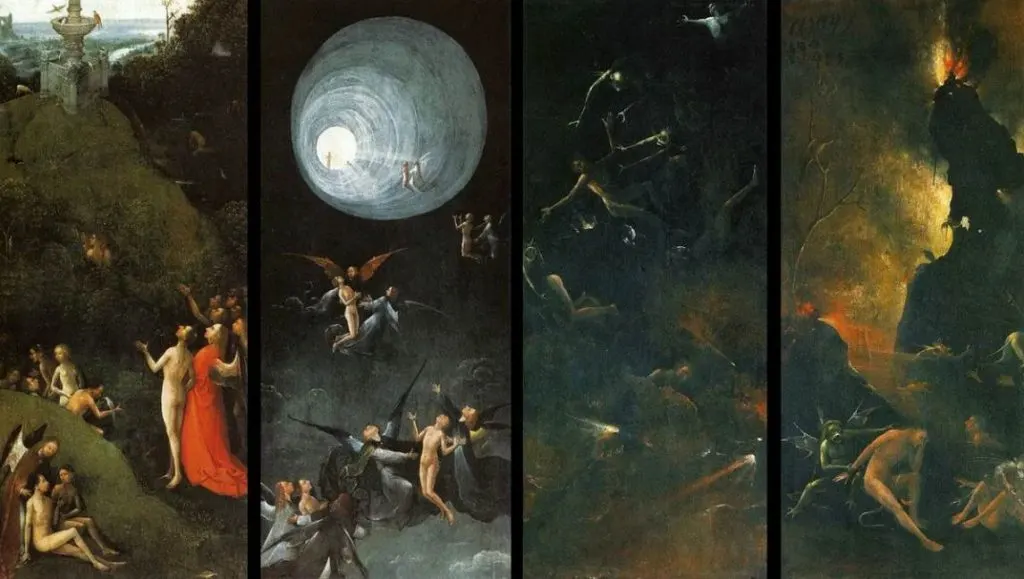When you think about fantastical religious paintings, the oeuvre of Hieronymus Bosch (1450-1516) is one of the most fascinating in art history.
Art historians have been debating for centuries whether or not his paintings were serious or merely comical interpretations of an artistic genius.
Bosch was a Dutch artist, named after the town of ‘s-Hertogenbosch, who continued the tradition of the Flemish Primitives. These artists were pivotal to the development of the northern Renaissance.
Not more than 25 Renaissance paintings have been positively attributed to the artist, mainly because only 7 of them were signed by him.
In this article, we’ll take a closer look at some of the most famous Hieronymus Bosch paintings so you can discover the remarkable oeuvre of this intriguing artist.
1. The Garden of Earthly Delights
- Date created: 1490-1510
- Dimensions: 205.5 × 384.9 centimeters (81 × 152 inches)
- Location: Museo del Prado, Madrid, Spain
The Garden of Earthly Delights is a triptych painting by Hieronymus Bosch and without a doubt the most famous one he ever produced. It’s one of the most talked-about paintings in history because of the numerous symbolic elements that the artist included.
It’s fair to conclude that the painting’s general interpretation is that it depicts a warning that indulging in earthly delights might result in consequences in the afterlife. Whether or not the morality of this subject was the main message that the artist wanted to convey remains unknown.
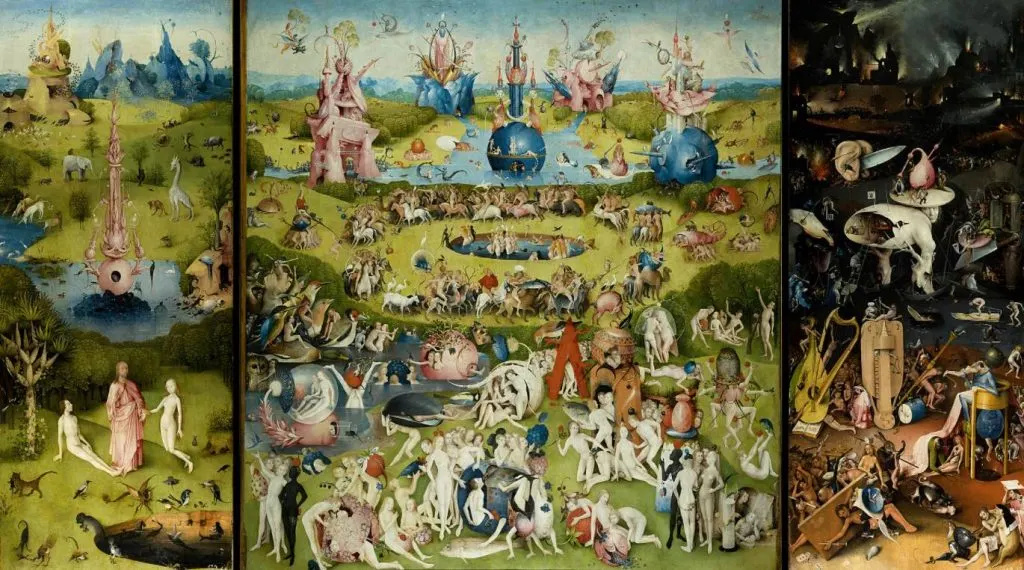
2. The Last Judgement
- Date created: After 1482
- Dimensions: Left and right panels: 167 x 60 centimeters (65.7 x 23.6 inches) – Central panel: 164 x 127 centimeters (64.56 x 50 inches)
- Location: Academy of Fine Arts, Vienna, Austria
The Last Judgement is a triptych with a similar subject as the Garden of Earthly Delights. The left panel depicts the Garden of Eden and the central panel features Jesus Christ on top judging the souls on earth while being surrounded by saints.
The most famous Hieronymus Bosch paintings were collected all around Europe, during his lifetime and beyond, and that’s mainly because of his famous hellscapes. The right panel of this triptych is one of the best examples of these as it depicts the damned souls being punished in the afterlife.
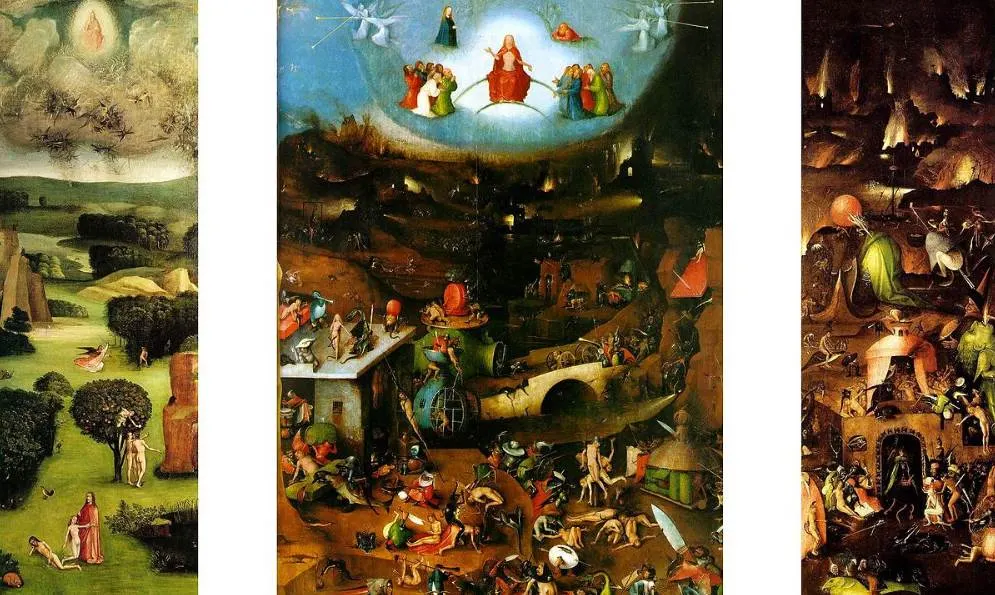
3. The Haywain
- Date created: 1516
- Dimensions: Central panel: 135 × 200 centimeters (53 × 79 inches) – Lef and right panels: 147 × 66 centimeters (58 × 26 inches)
- Location: Museo del Prado, Madrid, Spain

The Haywain Triptych is yet another famous triptych by Hieronymus Bosch and another version of the subject matter of the Garden of Earthly Delights. The left panel depicts Eve being given life by God while the central panel features a large hay wain surrounded by people committing a wide variety of sins.
As you surely expected, the right panel depicts the damned souls being sent to hell where they receive their horrible punishments. The painting is one of the 6 works acquired by King Philip II of Spain in 1570. It stayed at El Escorial before being put on display at the Prado Museum in Madrid.
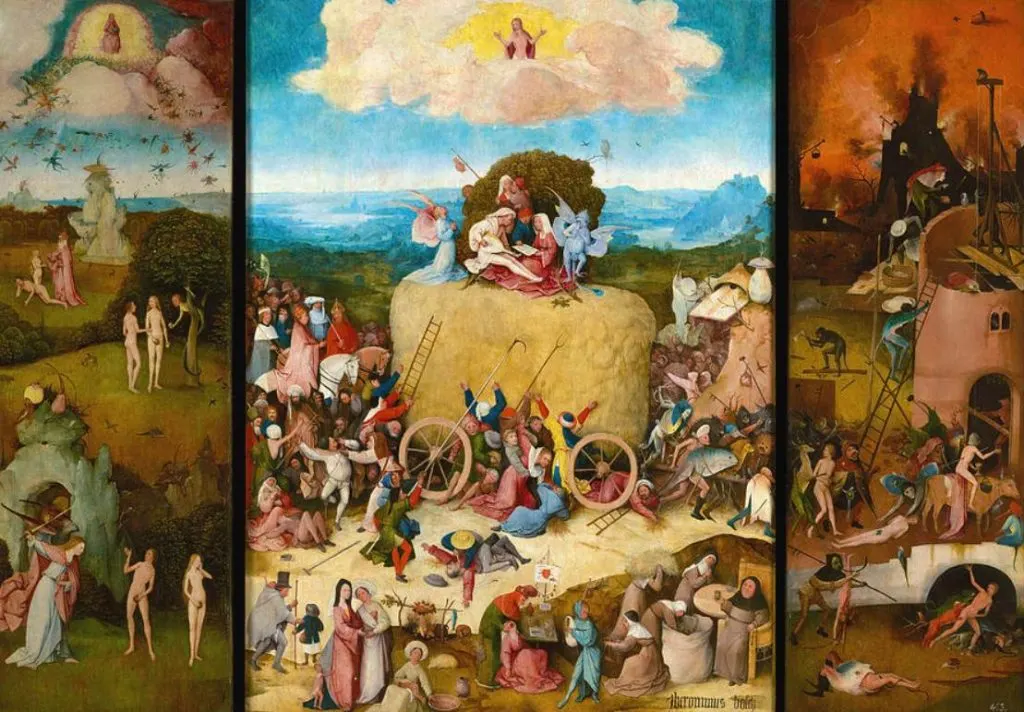
4. The Crucifixion of St Julia
- Date created: 1497
- Dimensions: 104 cm × 119 centimeters (41 × 47 inches)
- Location: Gallerie dell’Accademia, Venice, Italy
The Crucifixion of Saint Julia is also known as The Crucifixion of Saint Wilgefortis” or “Triptych of the Crucified Martyr.” The reason for these names is the simple fact that the subject matter of the painting has been up for debate for a long time.
The most probable title the one mentions Saint Wilgefortis, a fictional female saint that emerged from a folk story in the 14th century. Its also possible that it depicts Saint Julia of Corsica, a slave girl who was crucified in Roman times for refusing to worship the pagan gods.
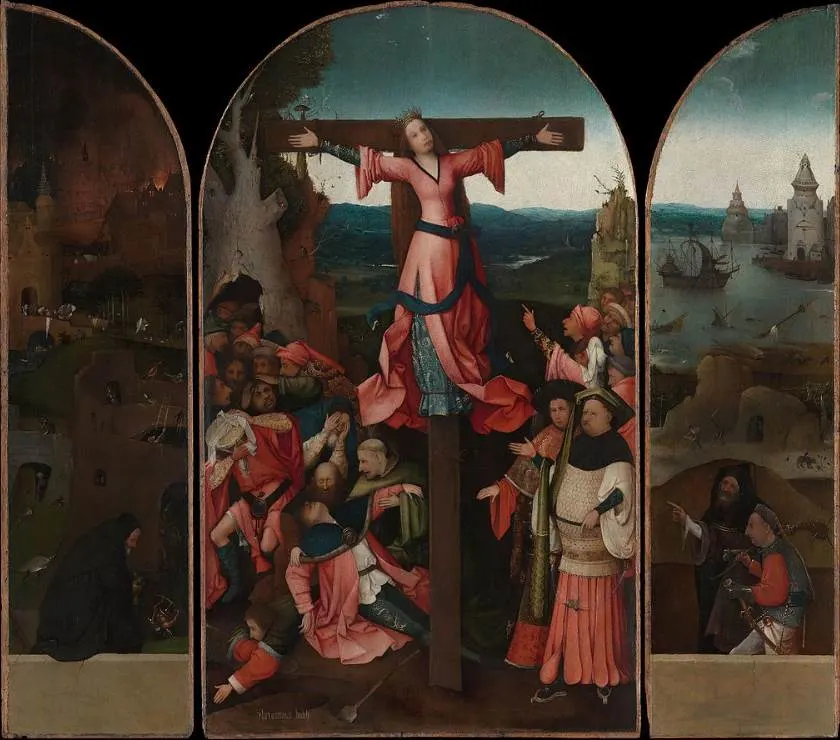
5. The Adoration of the Magi
- Date created: 1485-1500
- Dimensions: 138 × 144 centimeters (54 × 57 inches)
- Location: Museo del Prado, Madrid, Spain
Adoration of the Magi has been a very popular subject in the history of art, and it’s fair to conclude that the version painted by Hieronymus Bosch is one of the most fascinating ones. It’s another triptych in which the left and right panels depict saints with a donor.
The figures in the left panel have been identified as Saint Peter with donor Peter Bronckhorst. The right panel depicts donor Agnes Bosshuysse accompanied by her namesake Saint Agnes. The central part depicts the Adoration of the Magi or “Three Kings” featuring a typical landscape in the Low Countries.

6. St. John the Baptist in the Wilderness
- Date created: 1489
- Dimensions: 48.5 × 40 centimeters (19.1 × 16 inches)
- Location: Lázaro Galdiano Museum, Madrid, Spain
St. John the Baptist in the Wilderness is one of the smaller paintings by Hieronymus Bosch and one with a self-explanatory title. The painting is believed to form a pair with another work by Bosch called “St. John the Evangelist on Patmos” which is located at the Gemäldegalerie in Berlin, Germany.
The painting arrived in Spain in the early 20th century after being acquired by a Spanish art collector named Lázaro Galdiano. The collection of this man formed the base of the collection that can be admired in a museum bearing his name in Madrid.
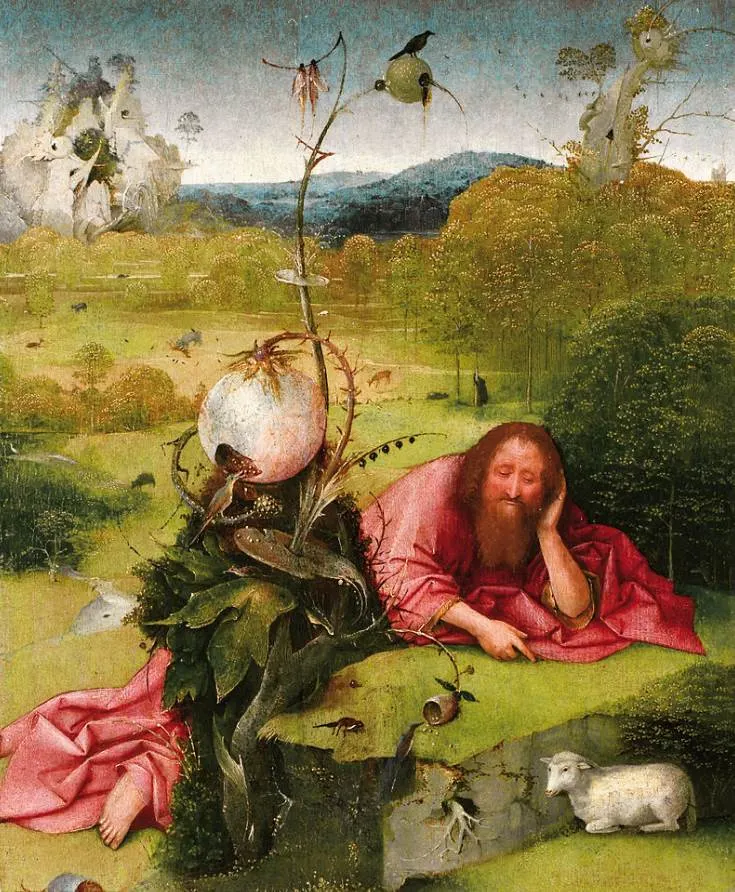
7. Ecce Homo
- Date created: 1475-1485
- Dimensions: 71 × 61 centimeters (28 × 24 inches)
- Location: Städel Museum, Frankfurt, Germany
Ecce Homo is a painting that depicts one of the episodes in the so-called “Passion of Christ.” Ecce Homo translates to “Behold the Man” and we can see Jesus Christ being paraded in front of an angry mob by Pontius Pilate in Jerusalem, shortly before being sentenced to death.
Jesus appears as a scared and rather thin man which is unlike some of the other paintings of the same subject. The original version of the work is on display in Frankfurt but there’s a copy present in the United States as well which is part of the collection of the Museum of Fine Arts in Boston.
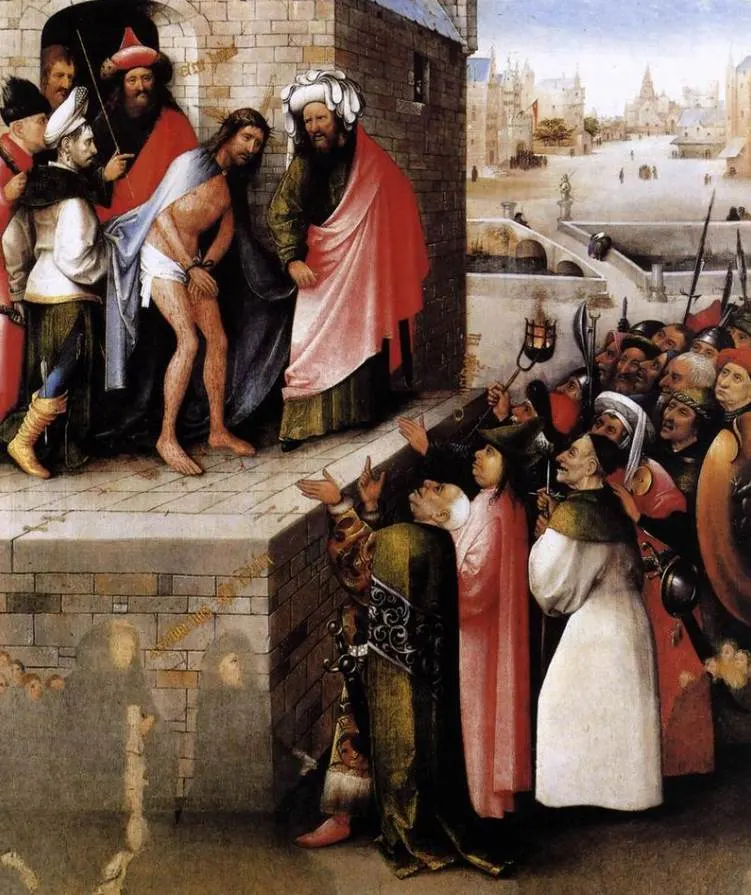
8. The Last Judgment (Bruges)
- Date created: 1486
- Dimensions: 99 × 117.5 centimeters (39 × 46.3 inches)
- Location: Groeningemuseum, Bruges, Belgium
The Last Judgment is another triptych painting depicting the Last Judgment. The central panel depicts Jesus Christ surrounded by saints on top, just like the painting in Vienna. The outer panels feature the same subject as the Garden of Earthly Delights at the Prado Museum.
The painting’s attribution to Hieronymus Bosch has been disputed as some art historians claim it was completed by his workshop. Recent research conducted by the Bosch Project has confirmed that it was completed by the hand of the master himself.
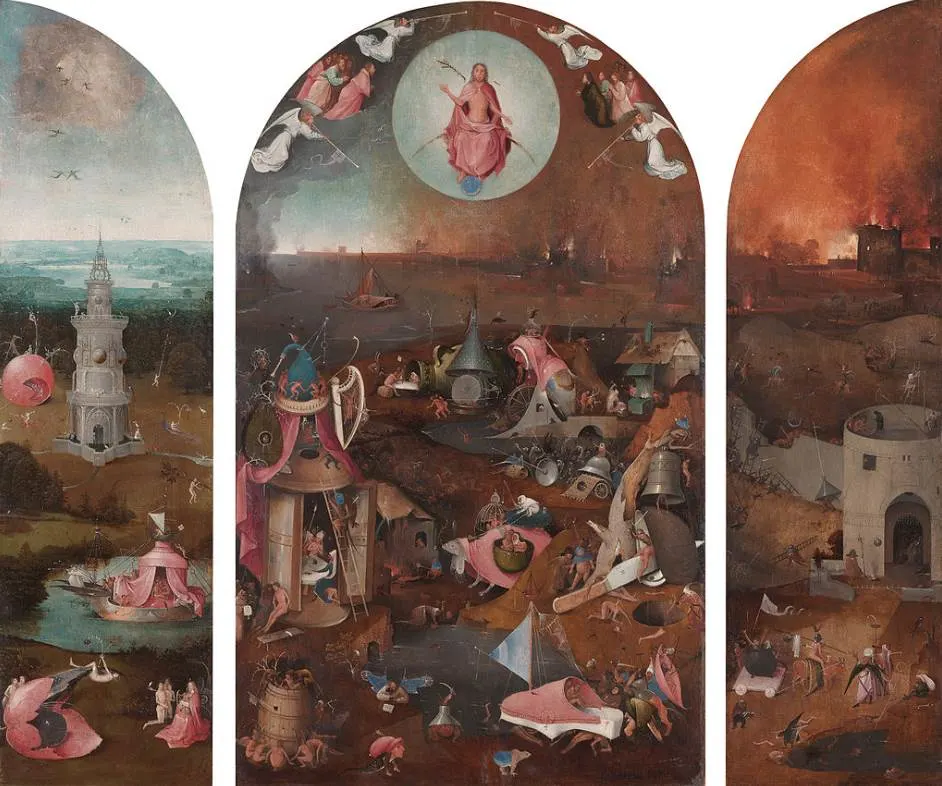
9. Allegory of Gluttony and Lust
- Date created: 1490-1500
- Dimensions: 34.9 x 31.4 centimeters (13.7 x 12.3 inches)
- Location: Yale University Art Gallery in New Haven, Connecticut, United States
Allegory of Gluttony and Lust is also referred to as “Allegory of Intemperance” and is a small painting that was once part of a larger triptych painting. The other confirmed parts of this triptych are called “The Shop of Fools” and “Death and the Miser.”
This particular painting is a work that condemns the deadly sin of Gluttony, while the other part condemns greed. The main figure is a rather fat man riding a barrel while indulging in a certain type of drink. We can only guess what the central panel of the painting was about because if it existed, it has been lost to history.
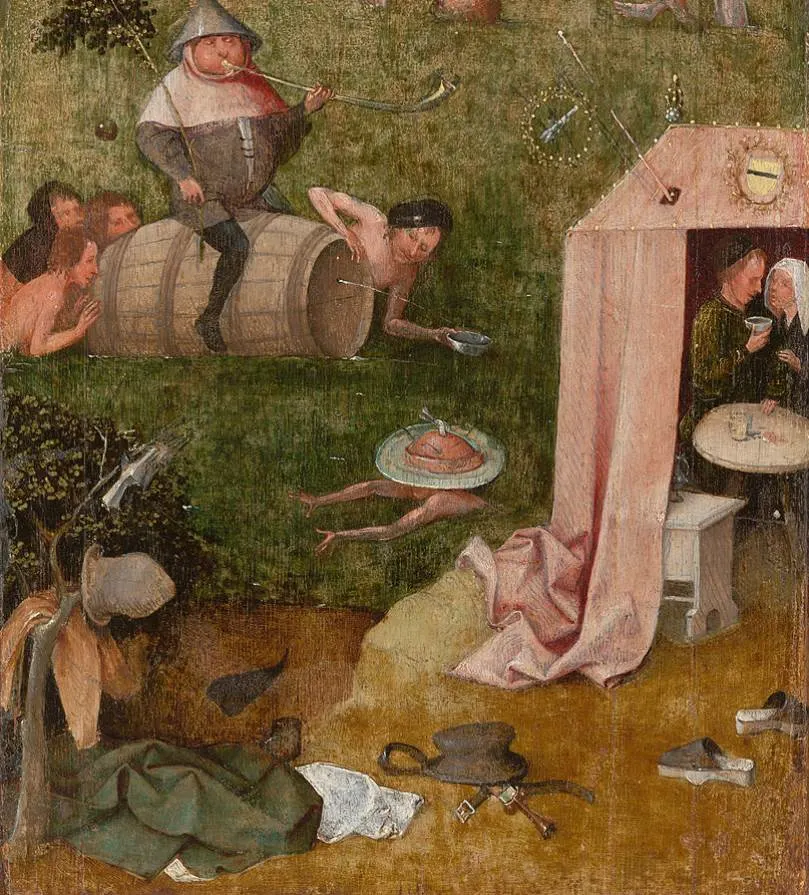
10. Visions of the Hereafter
- Date created: 1505-1515
- Dimensions: 4 panels of 88.5 x 39.8 centimeters (34.84 x 15.66 inches)
- Location: Museo di Palazzo Grimani, Venice, Italy
The main attraction of Hieronymus Bosch’s paintings is the recurring subjects of Heaven and Hell, often featured together in triptych or polyptych works. Very few paintings embody this notion as a work called “Visions of the Hereafter.”
People have been fascinated by the demons, angels, and other fantastical creatures in these intriguing works of art for centuries. The first two panels of this work depict the damned who are being dragged into Hell. The other two panels depict the saved souls who are being transported into the Kingdom of Heaven.
